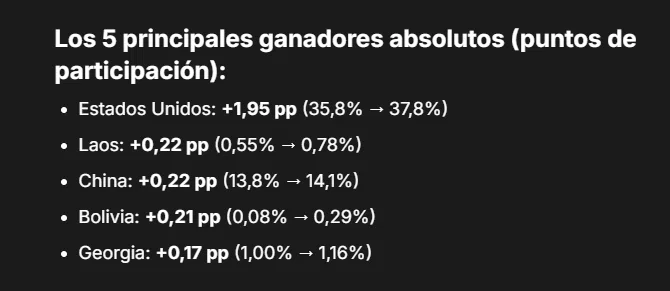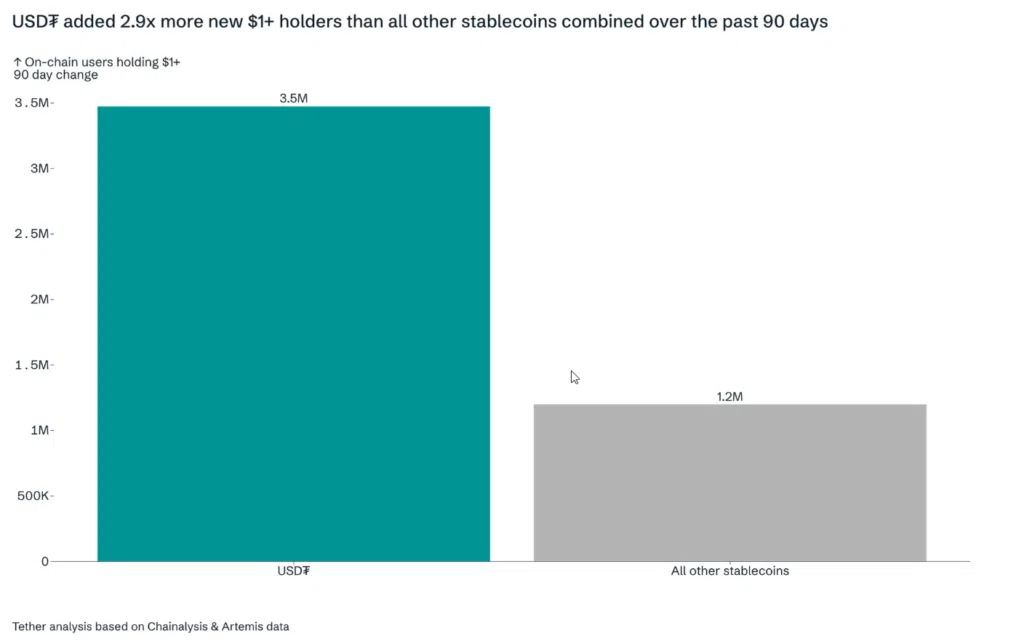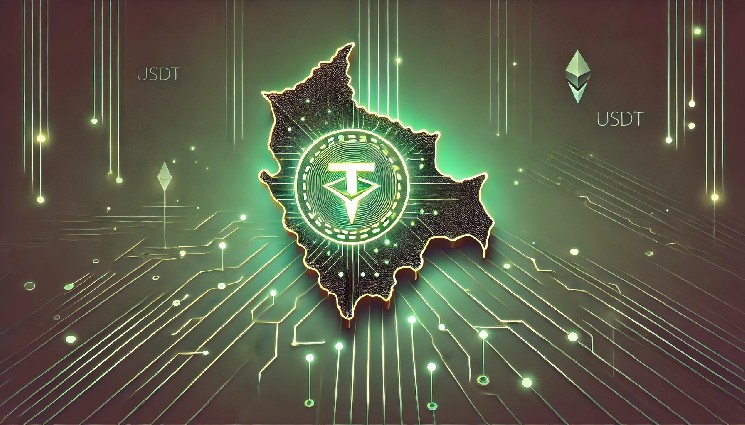- Bolivia’s Bitcoin mining hash rate has increased globally to 0.29% as the value of its currency declines due to inflation.
- Venezuela’s advanced USDT implementation offers lessons on risk management and corporate finance protocols.
Bolivia’s economy is going through a complex scenario characterized by a shortage of foreign currency. The national currency, the Boliviano, is under consistent pressure on its value. In this context, Bitcoin mining and the use of stablecoins like USDT are gaining traction as viable alternatives for citizens and businesses.
Growth of Bitcoin Mining in a Tough Economic Environment
In the global heat map of the hashrate index for Q4 2025, Bolivia has a 0.29% share of the global Bitcoin hashrate. Although this number is small in global terms, it represents quantitative growth compared to the previous quarter.

Source: Hashrate Index
The country’s share moved from 0.08% to the current 0.29%, an increase of 0.21 points. This increase placed Bolivia among the five countries with the highest absolute growth rate in that particular period and classified it as an emerging player in the global mining industry.
The main motivation for this growth is local economic conditions rather than exceptional mine profitability. Junior, a miner and activist from Costa Rica, noted that interest in Bitcoin mining in Bolivia has arisen as a way to protect against currency devaluation.
Inflation in the Bolivian economy has reached 80%, and the devaluation of the Boliviano is reported to reach 50% by 2025. The official exchange rate remains at 6.96 Bolivia to the dollar, but on the parallel market it is trading around 16.50 Bolivia, implying a decline of 137% between the two markets.
Fidel Torikos, chemical expert and CEO of Solvexco
“Using waste gas for cryptocurrency mining has the potential to diversify Bolivia’s economy, generate significant revenues and address challenges such as foreign exchange shortages and currency fluctuations.”
Testimonies from local miners detail this reality. Carlos, a Bolivian miner, reported insufficient income in local currency due to 130% inflation and the devaluation experienced in 2024. For him, digital mining became a necessary option. He clarified that although mining in Bolivia is not as profitable as in countries like Paraguay or Costa Rica, high domestic inflation makes mining a viable activity.
Another miner, Huáscar Miranda, offered a more technical perspective on costs. Miranda explained that generating BOL 100 with Bitcoin consumes approximately 72kWh of energy, which is equivalent to an $80 electricity bill. After accounting for additional costs, the net profit is reduced to only 10 BOL per operation.
Diego Monroy, Sales and Applications Engineer, Luka Industries LLC.
“Machines that require high levels of energy can potentially operate efficiently and profitably in remote locations.”
This low profit margin highlights the importance of optimizing operating costs. Miranda and other sector players stress that mining is only competitive in Bolivia if residual gas is used as an energy source. Fidel Torikos, a chemistry expert and CEO of Solvexco, supports this view. Mr. Torikos believes that by utilizing residual gas for Bitcoin mining, bolivia economy. This practice has the potential to generate income while addressing challenges such as currency shortages and currency fluctuations.
USDT as a tool for financial stability of citizens and businesses
In parallel with mining developments, Bolivia has seen a noticeable increase in the use of the USDT stablecoin. This digital currency, pegged to the US dollar, has become a fundamental tool for individuals and businesses to protect their capital from Boliviano volatility. International car brands such as Toyota, Yamaha, and BYD enter the market acceptance of payments In domestic USDT. This phenomenon is replicated in small-scale commerce, from local shops to restaurants, in cities like La Paz and Santa Cruz.
For USDT issuer Tether, the Bolivia case confirms its strategy in emerging markets. According to the company’s global data, its stablecoin has seen a 2.9x increase in holders with balances above $1 over the past three months compared to all other stablecoins combined.

Source: X/Paolo Ardoino.
In Bolivia, USDT is being integrated Alongside Bitcoin, it serves as a digital haven against the erosion of the purchasing power of local currencies. Economist Cesar Vargas Díaz revealed in an interview that the country’s gold reserves have decreased significantly, from 40,000 tons in state coffers to just 0.9 tons.
Vargas Díaz said the current monetary base lacks solid support. He said that although the amount of currency issued reached $9 billion, the real monetary base was close to $3 billion, a situation that was unsustainable. Economists have proposed fundamental changes. The solution was to switch from gold backing to lithium.
He proposed creating a new currency, BSL, that would be 80% paper and 20% digital, backed by lithium reserves estimated at $184 billion. Although this proposal is being debated, the public has already made a practical decision. Bolivians made $430 million worth of transactions in Bitcoin and other cryptocurrencies within 12 months.
Lessons from Venezuela: Responsible management of stablecoins
In Venezuela, USDT is deeply integrated into the daily operations of companies. Venezuelan financial commentator José Miguel Farias acknowledges that more and more companies are using stablecoins for payments, financial management, and working with customers and partners abroad. Farias issues an important warning that simply adopting digital assets does not guarantee proper treatment. He emphasizes that USDT is a tool that requires management, control and financial standards to be applied.
In Venezuela, more and more companies are incorporating USDT into their daily operations, including payments, financial management, and working with allies and customers abroad. But doing it well isn’t about jumping on trends, it’s about building in the tools you need to manage.
— Jose Miguel Farias (@jmfarias) October 9, 2025
Farias said digital operations do not exempt the need for operational structures. On the contrary, they demand it more broadly. He urges companies to follow the example of companies that manage USDT responsibly.
In Venezuela, more and more businesses are incorporating USDT into their daily operations, including payments, cash management, and transactions with international partners and customers. But getting it right isn’t about jumping on trends; it’s about incorporating tools that require management, control, and financial judgment. Digital does not exempt structure. Digital demands more.
These companies have established clear internal policies that define the percentage of their treasury held in assets, choose the platforms on which they operate, and determine protocols for storing funds. Farias emphasized that documenting all transactions, recording exchange rates and corroborating the origin of funds is not just bureaucracy, but an essential form of protection.
The first step is to recognize that using stablecoins is a management tool, not an experiment. Companies that do it right have clear policies in place, including what percentage of their treasury goes into USDT, what platforms it trades on, and who stores it. Documenting all transactions, recording rates, and backing up funding sources is protection, not bureaucracy.
Commenters clarified that using USDT is not equivalent to simply purchasing physical dollars. Behind stablecoins is technology, blockchain networks, and operational logic that businesses must understand in order to maintain control of their resources.
Using USDT is not the same as buying dollars. Behind it is technology, networks, and operational logic that companies must strive to understand. People who do not understand how the money they manage is running invisible risks. And in this environment, the price of ignorance is not paid in devaluation, but in the loss of direct control.
Not knowing how digital money moves creates hidden risks, such as mismanagement of private keys and non-compliance with tax obligations. Farias recommends that companies develop internal capabilities, train accounting teams, establish custody protocols and assess the tax implications of handling digital assets.
🚨 Will the Central Bank of Venezuela 🇻🇪 and Banco de Venezuela plan to add USDT to the system?
This extended version of the video explains what’s actually going on 👀 pic.twitter.com/FNt4r6Uq4m
— Criptolawyer (@criptolawyer) September 9, 2025
Economist Kryptrayer noted that the Venezuelan state is increasingly using USDT for payments beyond physical dollars, especially for private companies and businesses related to the oil sector.
Chainalysis data ranks Venezuela highly. latin american economy Retail activity in cryptocurrencies was the highest, with over $44.6 billion in transactions recorded from July 2022 to June 2025. Demand for USDT is so high that its price in Venezuelan bolivars exceeded 300 bolivars per unit in September, after rising by about 44% from the 208 bolivars recorded earlier in the month.


